Table of Contents
Bolivian Ram vs German Blue Ram Key Takeaways:
- Bolivian Rams are larger, reaching sizes of 3-4 inches, while German Blue Rams are smaller, growing to about 2-2.5 inches in length.
- Bolivian Rams require a tank size of at least 30 gallons per fish, while German Blue Rams can be housed in a 10-gallon tank.
- Bolivian Rams prefer temperatures around 73.4-74.8°F and a pH range of 6.0-7.5, while German Blue Rams thrive at temperatures of 78.8-87.8°F and a pH between 5.5-6.5.
- German Blue Rams are more colorful, displaying vibrant shades of yellow, orange, green, and blue, while Bolivian Rams have more subdued colors of brown, gray, yellow, and orange, with black stripes.
- German Blue Rams are more prone to diseases such as skin flukes, ich, and fish tuberculosis, requiring diligent care to maintain their health.
- German Blue Rams have an average lifespan of 3-4 years, similar to Bolivian Rams, but they require more attention due to their sensitivity to water conditions.
- Bolivian Rams need a larger tank due to their size, while German Blue Rams are more suited for smaller aquariums.
- German Blue Rams have specific tank setup requirements, including live plants and appropriate substrate, to mimic their natural habitat.
Size Comparison:
| Bolivian Ram | German Blue Ram |
|---|---|
| Can grow up to 3.5 inches (males). Females reach a maximum size of 3 inches. | Typically reach a length of 2 to 2.5 inches (males). Females are even smaller. |
Maintenance and Care
When it comes to the maintenance and care of Bolivian rams and German blue rams, there are a few key factors to consider. Both species require specific care to ensure their health and well-being in your aquarium.Diet
For the overall health of your rams, a balanced and nutritious diet is essential. Bolivian rams and German blue rams are omnivorous. They eat both plant and animal matter. Feeding them high-quality pellets, flake food, freeze-dried bloodworms, and frozen brine shrimp is recommended. This varied diet makes sure they get all needed nutrients.Water Conditions
Creating the right environment is key for your rams’ well-being. From the Amazon River in Brazil and Bolivia, Bolivian rams like slightly acidic water. Their preferred pH range is 6 to 7.5, and they can handle temperatures up to 87°F (30.6°C). German blue rams, from near the Amazonian rivers in Colombia and Venezuela, do well in 78°F to 85°F water. They prefer soft to medium-hard water, with a hardness range of 6 to 14 dGH. Keeping their water conditions right by performing regular tests is important for their health.Tank Setup
The right tank setup is crucial for your rams’ comfort and health. Bolivian rams need more space than German blue rams. A single Bolivian ram requires about 30 gallons (113L) of water, while a German blue ram needs 10 gallons (38L) per fish. Having enough space and hiding spots in the tank reduces their stress. When picking tank mates, choose compatible fish species carefully. Bolivian rams get along with other Bolivians and certain other fish, while German blue rams do well with hardy dithers that can handle high temperatures. Don’t put Bolivian and German blue rams together as they may not get along. Regular maintenance, like 20% weekly water changes and gravel vacuuming, keeps water conditions ideal. By following these guidelines, you can create a healthy environment for both Bolivian and German blue rams.Behavior
Bolivian rams and German blue rams act differently in aquariums, making each unique. Bolivian rams are peaceful and shy, hanging out in lower to middle parts of the tank. They’re smart, can adapt well, and might even follow your finger, showing they’re smarter than German blue rams. German blue rams, on the other hand, are full of energy and playful. They like exploring every part of their tank with curiosity. But, German blue rams, especially the males, can get territorial, sometimes fighting to claim their space. Giving them lots of hiding places helps prevent fights. Though Bolivian and German blue rams are peaceful compared to other aggressive fish, knowing how they behave is key. This knowledge ensures they get the right environment and live together without trouble.Participant Opinions and Preferences
- In a discussion about Bolivian Rams and German Blue Rams, 22 people shared their thoughts.
- Most talks were about the rams’ differences and how to take care of them.
- Folks shared insights on color, smarts, and the best tank conditions for each kind.
- Some said a 20-gallon tank might be too small for them to get along.
- There was advice on which other fish get along with German Blue Rams and which are better for hardier Bolivian Rams.
- People shared tips like German Blue Rams doing well in water with a pH of 6.2 if you change the water often and use peat moss.
- There were suggestions for other bright dwarf cichlids and how to keep them happy.
- There was also a chat about how to mix tap and reverse osmosis water to make fish happy.
Tank Size and Setup
When you’re setting up a tank for Bolivian or German blue rams, remember their needs. They need a specific tank size and a habitat that feels like their natural home. Bolivian rams are bigger and need a lot of room. A 30-gallon tank is the minimum for one. This gives them space to swim and be happy. For more than one, you’ll need more space to keep them all comfy. Bigger tanks also mean better water and fewer fights for territory. German blue rams are smaller and can live in a 10-gallon tank. Yet, a bigger tank is better for stability and water quality. More water means more consistent conditions. For both types of rams, setting up the right environment is key. Add live plants like Amazon swords, Vallisneria, and java ferns. These plants make good hiding spots. They also help keep the water clean and add oxygen. Keeping the right water conditions is vital for the rams’ health. Bolivian rams like warmer water around 87°F and slightly acidic water. They need a pH from 6 to 7.5. German blue rams need a bit cooler water, from 78°F to 85°F. They like their water soft to medium-hard, with hardness from 6 to 14 dGH. To sum up, a good tank size and setup are key for Bolivian and German blue rams’ health. Enough space, the right water, and a natural setup help them grow well. This setting lets these beautiful fish act naturally.Tank Mates
When picking tank mates for your Bolivian rams or German blue rams, look for peaceful fish. These cichlids get along well with many other species in a community aquarium. Here are some good choices for each:Tank Mates for Bolivian Rams
Bolivian rams are calm and fun to watch. They are a favorite among fish lovers for this reason. They do well with fish like:- Dwarf gouramis
- Tiger barbs
- Guppies
- Rummy nose tetras
- Silver dollars
Tank Mates for German Blue Rams
German blue rams are brightly colored and make your tank pop. When choosing their tank mates, think about their needs and sensitivity. Good tank mates for them include:- Discus
- Dwarf gouramis
- Clown loaches
- Corydoras catfish
| Bolivian Rams | German Blue Rams |
|---|---|
| Breed Compatibility | Breed Compatibility |
| Community Setting Compatibility | Community Setting Compatibility |
| Water Parameter Compatibility | Water Parameter Compatibility |
| Behavioral Compatibility | Behavioral Compatibility |
Disease Susceptibility
German blue rams and Bolivian rams handle sickness differently. German blue rams get sick more often, especially when tank conditions change. These fish face issues like skin flukes, ich, and even fish tuberculosis. Fish tuberculosis is worrying as it might also impact humans. Bolivian rams, while hardier, aren’t immune to diseases. They often get white spot disease. Treating it requires warming the water to 86°F and maybe using copper.Prevention and Care
Keeping both German and Bolivian rams healthy means good water care and testing. A diet that fits their needs is also crucial. Also, a clean tank with the right water can guard against diseases. It’s key to their health and fighting off infections.Breeding
 Breeding Bolivian and German blue rams can be very rewarding. They take care of their eggs and babies. Right conditions are needed for them to breed well.
Breeding Bolivian and German blue rams can be very rewarding. They take care of their eggs and babies. Right conditions are needed for them to breed well.
Breeding Setup
For breeding, creating the right setup is key. Providing places like caves or flat rocks helps. It lets the fish lay eggs safely and feel secure.External Fertilization
Bolivian and German blue rams use external fertilization. The male fertilizes the eggs laid by the female. Then, they both protect the eggs and help them get oxygen.Egg Incubation and Fry Care
The eggs hatch in 2 to 3 days. After hatching, the parents protect their fry. Giving the babies proper food, like baby brine shrimp, is crucial for their growth.Observation and Selection
Watching potential breeding pairs is important. Observing them in-store can highlight pairs ready to mate. Pick fish that get along well for a better chance at breeding success.Breeding Challenges
Breeding can lead to the fish getting territorial. To reduce fighting, provide many hiding places. Proper water conditions are also critical for success.Population Management
Managing a growing population is tough. Some breeders handle many pairs and thousands of fry. Planning and the right tank size are key.Breeding Considerations
For Bolivian rams, keep the water around 76°F and a bit acidic. German blue rams like warmer water, between 78°F and 85°F. They prefer softer water. Keep an eye on water parameters like temperature, pH, and hardness for breeding success.| Bolivian Rams | German Blue Rams |
|---|---|
| Origin: Amazon River in Brazil and Bolivia | Origin: Amazonian rivers in Colombia and Venezuela |
| Size: Up to 3.5 inches | Size: Up to 2 inches |
| Price: Around $10 USD | Price: Around $8 USD |
| Tank Size: Approximately 30 gallons per fish | Tank Size: Approximately 10 gallons per fish |
| TDS Levels: N/A | TDS Levels: Over 500ppm |
| Preferred Temperature: 76°F | Preferred Temperature: 80°F |
| pH Range: 6 to 7.5 | pH Range: N/A |
Bolivian Ram Known Facts
Bolivian rams (Mikrogeophagus altispinosus) are easy-to-care-for freshwater fish from the cichlid family. They can live up to 4 years with good care. Their bodies are long and oval, with big fins on top and near their bellies. They have colors from tan to silver with a yellow belly. This makes them stand out in any fish tank. These fish need at least a 30-gallon tank to swim and explore. Their tanks should have sandy bottoms and big pebbles, like their natural home. They eat sinking food pellets and love a mixed diet. This includes color-enhancing food, frozen mysis, and brine shrimp. Bolivian rams are peaceful, so they are great with other calm fish. This makes for a peaceful fish tank. But, it’s key to pick tank mates that get along. This keeps the tank happy and avoids fights over territory.Bolivian Ram Lifespan
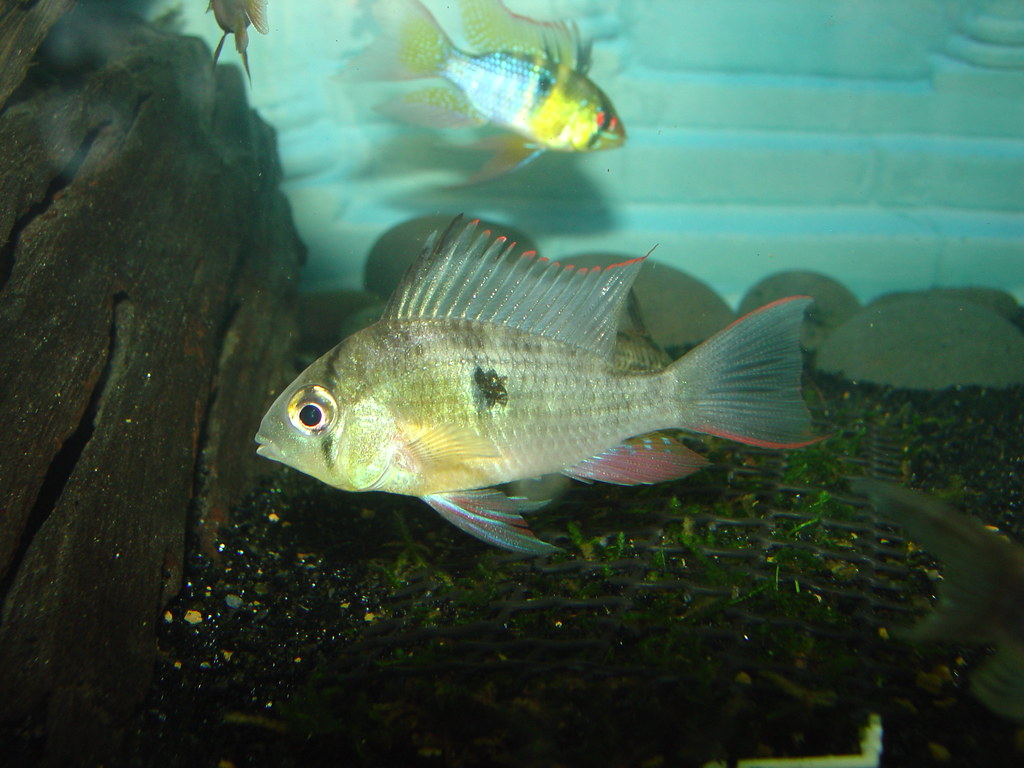 To live a full life of up to 4 years, Bolivian rams need the right care. This includes water that’s around 76°F and a bit acidic, with pH levels from 6 to 7.5. Changing 20% of the water every week helps keep them healthy and the tank clean.
Bolivian rams make a tank more interesting. They are quiet, look unique, and are easy to take care of. This makes them a loved choice for anyone who enjoys keeping fish.
To live a full life of up to 4 years, Bolivian rams need the right care. This includes water that’s around 76°F and a bit acidic, with pH levels from 6 to 7.5. Changing 20% of the water every week helps keep them healthy and the tank clean.
Bolivian rams make a tank more interesting. They are quiet, look unique, and are easy to take care of. This makes them a loved choice for anyone who enjoys keeping fish.
German Blue Ram Known Facts
 German blue rams (Mikrogeophagus ramirezi) are peaceful, stunning fish from the cichlid family. They flaunt vibrant colors like yellow, red, blue, and orange. This makes them a top pick for fish keepers. These rams live up to 3 to 4 years with good care.
German blue rams need a tank that’s at least 10 gallons. But, bigger tanks are better for them to thrive. Live plants in the tank make great hiding spots. They also make the tank feel more natural for the rams, reducing stress.
German blue rams eat both plant and animal matter. They can be picky eaters. Giving them sinking pellets or quality flakes ensures they get the right nutrients.
They are usually peaceful but can be territorial when breeding. Choose tank mates that are also peaceful. Watch the fish to catch any aggression early on.
German blue rams are known for their beautiful colors and calmness. They need more care than Bolivian rams. Yet, they’re a great choice for those looking to brighten their aquarium.
German blue rams (Mikrogeophagus ramirezi) are peaceful, stunning fish from the cichlid family. They flaunt vibrant colors like yellow, red, blue, and orange. This makes them a top pick for fish keepers. These rams live up to 3 to 4 years with good care.
German blue rams need a tank that’s at least 10 gallons. But, bigger tanks are better for them to thrive. Live plants in the tank make great hiding spots. They also make the tank feel more natural for the rams, reducing stress.
German blue rams eat both plant and animal matter. They can be picky eaters. Giving them sinking pellets or quality flakes ensures they get the right nutrients.
They are usually peaceful but can be territorial when breeding. Choose tank mates that are also peaceful. Watch the fish to catch any aggression early on.
German blue rams are known for their beautiful colors and calmness. They need more care than Bolivian rams. Yet, they’re a great choice for those looking to brighten their aquarium.
Rams Care Tips and Considerations
When caring for Bolivian rams and German blue rams, keep several factors in mind. A well-maintained habitat, good tank mates, a proper diet, and optimal water conditions are vital. These aspects are crucial for the health and happiness of these cichlid species.Habitat and Tank Setup
Bolivian rams and German blue rams need a spacious tank with places to hide. A tank of at least 30 gallons is best for Bolivian rams and 10 gallons for German blue rams. Add live plants and decorations like caves or flat rocks to recreate their natural home. Also, it’s critical to keep the water conditions just right for their health.Tank Mates
Choose calm fish as tank mates for your rams, ones that won’t bother them. Bolivian rams can live with dwarf gouramis, tiger barbs, guppies, rummy nose tetras, and silver dollars. German blue rams are good with discus, dwarf gouramis, clown loaches, and Corydoras catfish. Stay away from aggressive fish that could stress or hurt the rams.Water Parameters and Maintenance
Testing water for temperature, pH levels, and nitrates is key for Bolivian and German blue rams. Bolivian rams like a pH above 6.5. German blue rams prefer a pH of 5-6. German blue rams need water between 78.8-87.8°F, while Bolivian rams thrive at 73.4-74.8°F. Change the water often and watch the nitrate levels to avoid problems. Keep nitrates below 10 ppm for a healthy tank. Proper filtration and regular partial water changes are essential for clean water.Identifying Pair Compatibility for Breeding
If you want to breed rams, picking the right pairs is important. Watch how the rams act and their size to see if they might breed well. For better chances at breeding, buy rams from a breeder. They can offer healthy and well-matched pairs for breeding.Dealing with Aggression and Territorial Behavior
Bolivian and German blue rams can get aggressive, especially when breeding. Keep an eye on your tank for any signs of trouble. Offering many hiding places can lower aggression. If aggression gets out of hand, consider a separate tank or change the tank’s layout.Care for Bolivian Rams Over German Blue Rams
Bolivian rams are gentle and have interesting personalities. Many prefer them for their ease of care and amusing behavior. It’s advised to house one Bolivian ram in a 20-gallon tank for other fish’s safety. They can grow up to 4 inches and might eat shrimp. Watch their behavior and adjust their diet as needed. For more detailed info on Bolivian rams, you can visit a dedicated website focused on their care.Conclusion
The Bolivian Rams and German Blue Rams have several differences. Bolivian Rams can grow to 3-4 inches, bigger than German Blue Rams. German Blue Rams reach only 2-2.5 inches. Bolivian Rams need a 30-gallon tank each, but German Blue Rams are fine in a 10-gallon tank. Bolivian Rams like water temperatures between 73.4-74.8°F and a pH of 6.0-7.5. German Blue Rams prefer warmer water, 78.8-87.8°F, and a pH of 5.5-6.5. German Blue Rams are more likely to catch diseases like skin flukes and ich. Bolivian Rams typically live longer, about 4 years, compared to German Blue Rams. Bolivian Rams are good with dwarf gouramis, tiger barbs, and guppies. German Blue Rams do well with discus, dwarf gourami, and Corydoras. For breeding, Bolivian Rams pair off naturally. German Blue Rams need a bonded pair or a group. Choosing between Bolivian and German Blue Rams depends on their size, tank needs, and which fish they’re friendly with. Giving them the right care ensures their health and happiness. These cichlids make your aquarium lively and colorful.FAQ
What are the key differences between Bolivian rams and German blue rams?
Bolivian rams are larger and not as colorful. German blue rams are smaller with brighter colors.
What are the care requirements for Bolivian rams and German blue rams?
Bolivian rams are easy to care for. German blue rams need more attention. Both need a good diet, water tests, and clean water.
How do the behavior of Bolivian rams and German blue rams differ?
Bolivian rams are calm and shy. German blue rams can be territorial and may fight, especially the males.
What tank size and setup do Bolivian rams and German blue rams require?
Bolivian rams need at least a 30-gallon tank. German blue rams are okay in a 10-gallon tank. Both like a natural-looking tank with places to hide and live plants.
What are suitable tank mates for Bolivian rams and German blue rams?
Bolivian rams get along with various fish such as dwarf gouramis and tiger barbs. German blue rams can live with discus and Corydoras catfish.
Are Bolivian rams or German blue rams more susceptible to diseases?
German blue rams are more likely to get sick from things like ich and fish tuberculosis. Bolivian rams are tougher but can get white spot disease too.
How can Bolivian rams and German blue rams be bred in a home aquarium?
They both take care of their eggs. Give them room for breeding. Feed the young ones baby brine shrimp.
What are some known facts about Bolivian rams?
Bolivian rams have a lifespan of 4 years and like a big tank. They are peaceful with other calm fish.
What are some known facts about German blue rams?
German blue rams live for 3 to 4 years and need at least a 10-gallon tank. They also need plants to hide in.
What care tips and considerations should be kept in mind when keeping Bolivian rams and German blue rams?
Give them a good home with the right fish friends, proper food, and clean water. Check the water, change it sometimes, and watch for sickness. Make sure their tank has enough room and places to hide. Avoid fish that are mean.References The South American Cichlid Association (SACA) The American Cichlid Association (ACA)British Cichlid Association British Cichlid Association Homepage
I am a passionate aquarist with over 30 years of hands-on experience in fishkeeping. My journey began at a young age, collecting fish from the wild and learning through experimentation. Specializing in tropical fish, I bring a deep understanding of the hobby to FishKeepingMadeSimple. The site provides honest, detailed reviews of essential products and accessories to help fellow enthusiasts create the best environments for their fish.

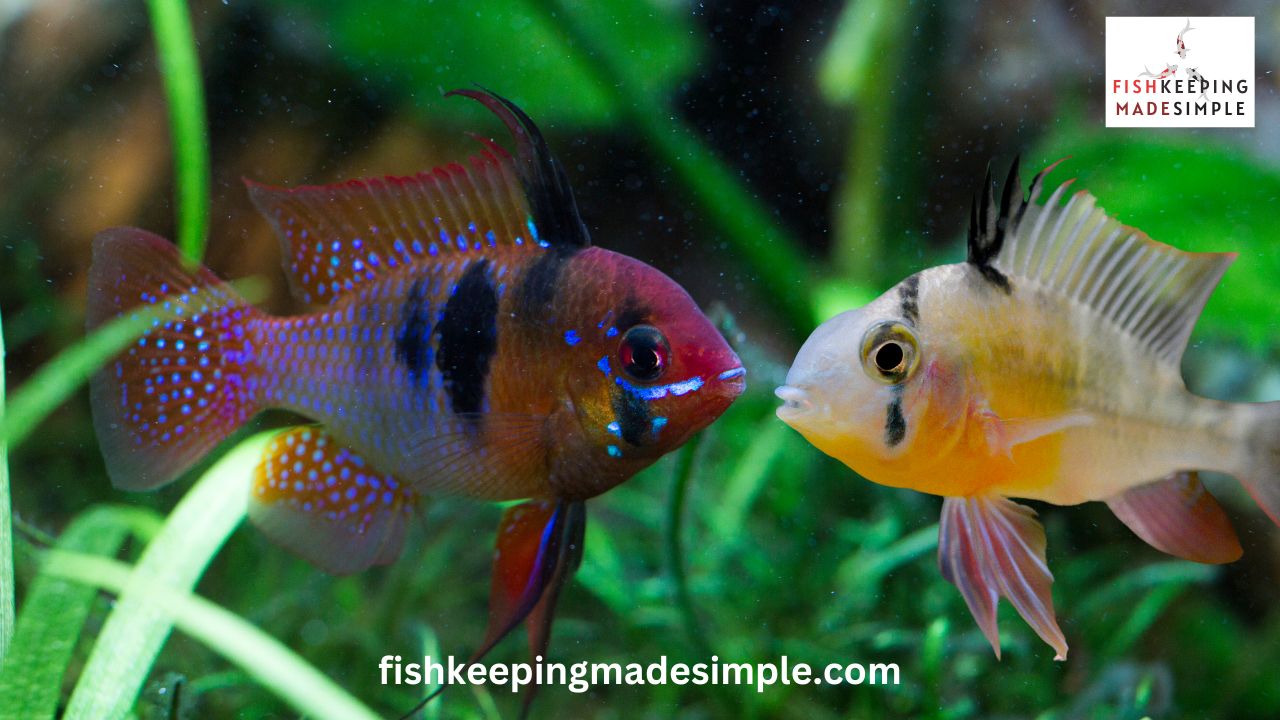
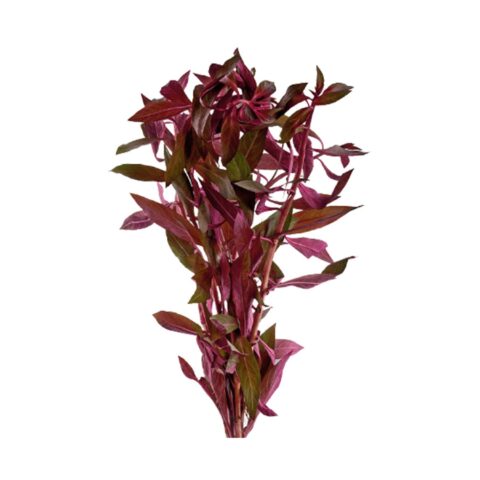

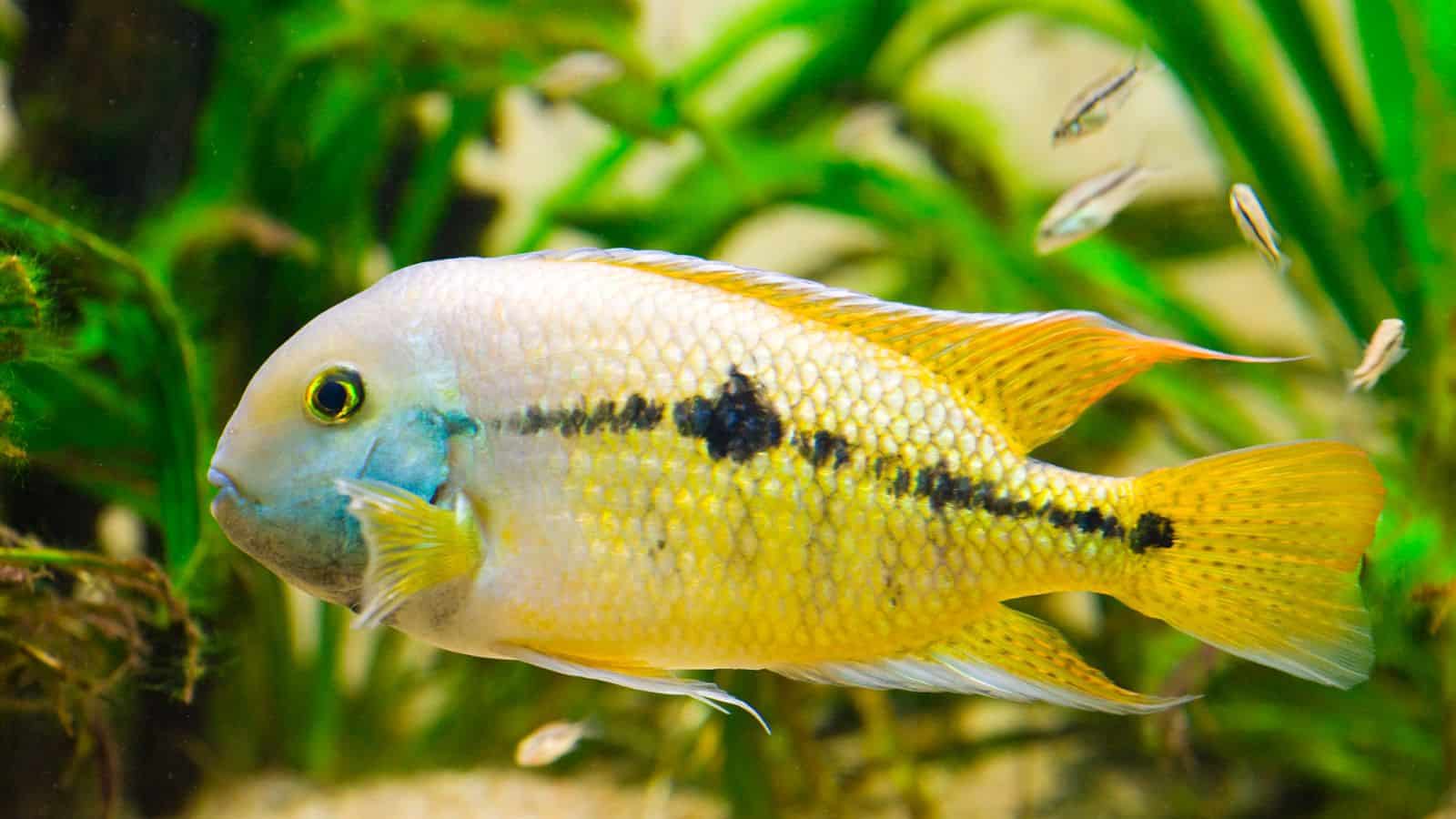
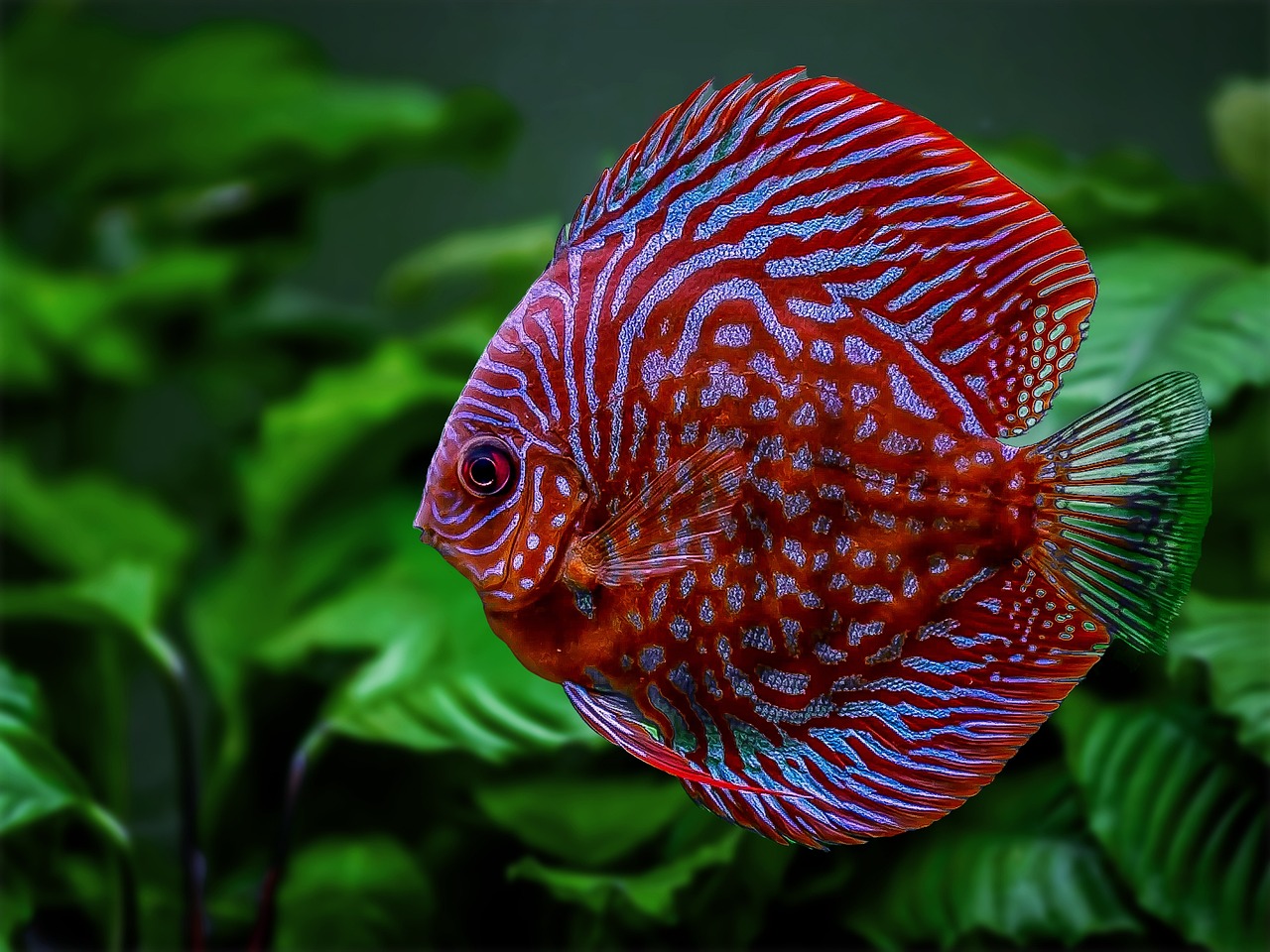
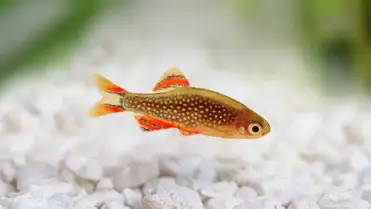

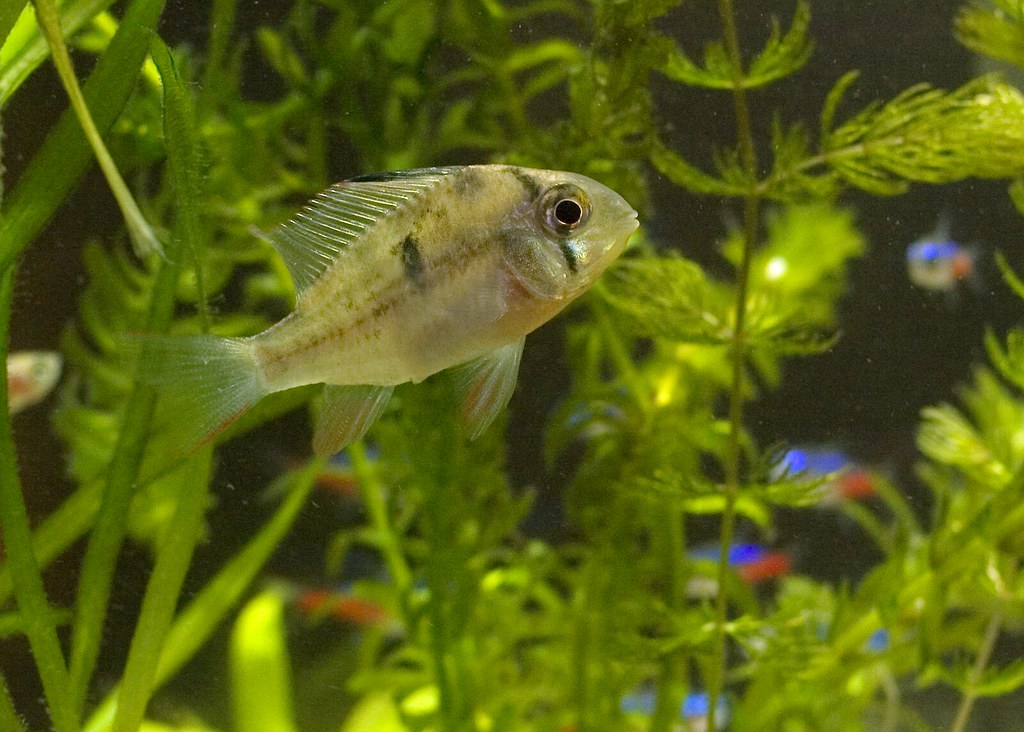
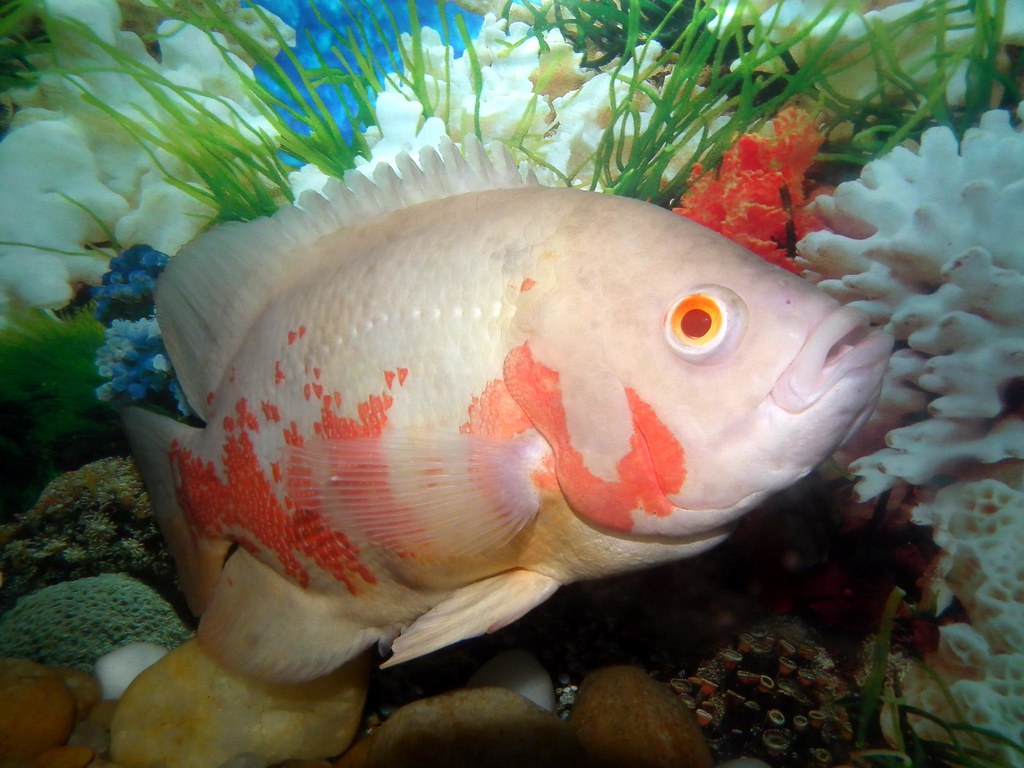
[…] to have fun and enjoy the process. Discus fishkeeping is a rewarding hobby that can bring years of joy and fulfillment. Happy […]